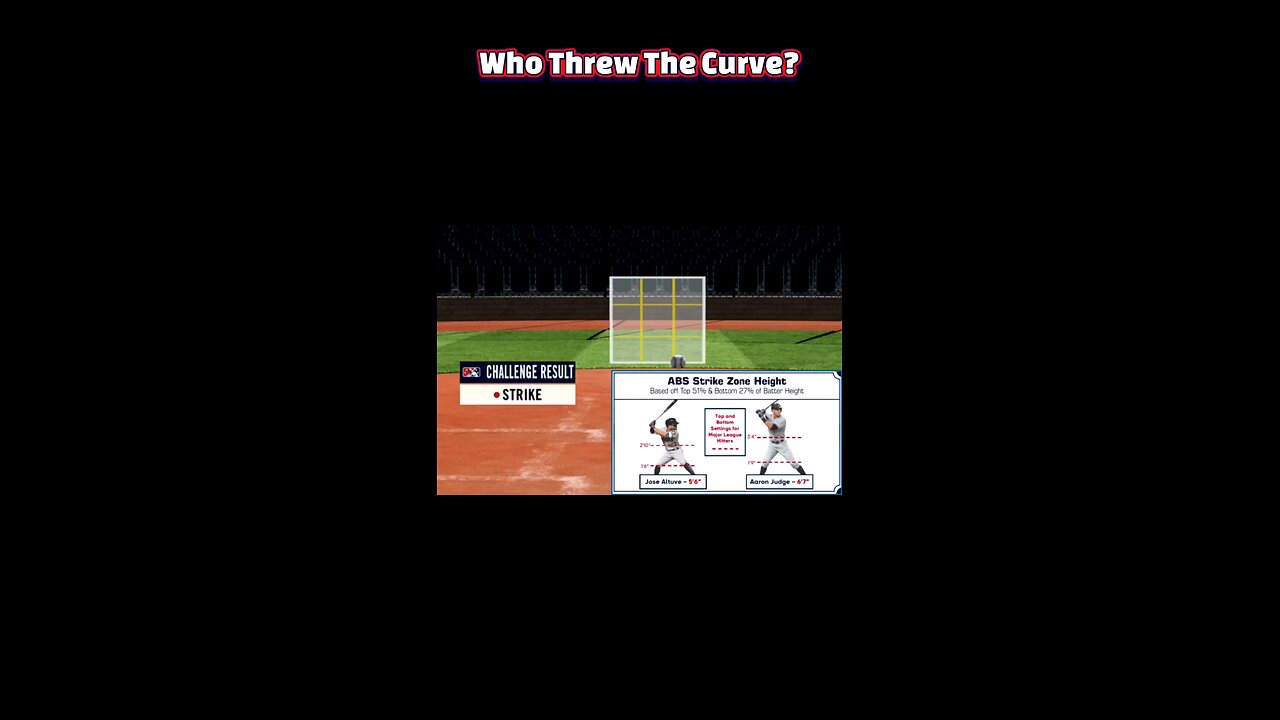Premium Only Content

Robots vs. Umpires: Is Baseball Losing Its Soul?
#BaseballTech #ABS #Umpires #StrikeZone #RobotsInSports #MLB #PaceOfPlay #SoulOfBaseball #TechVsTradition #SportsDebate
Baseball has always hinged on the split-second judgment of home-plate umpires, a tradition stretching back to 1864. In spring training 2025, Major League Baseball began deploying the Automated Ball-Strike (ABS) challenge system in roughly 60% of exhibition games. Hawk-Eye cameras run silently in the background, and after each close call, pitchers, catchers, or batters can tap their helmets to contest a call. This hybrid model preserves the umpire’s role while inserting “robotic” oversight only when requested—a compromise designed to balance tradition with technological precision.
Proponents of ABS point to stark numbers: in 2024, human umpires miscalled 27,336 pitches, and 1,637 of those miscues directly produced strikeouts. ABS’s machine-learning algorithms and computer-vision tracking eliminate the gray area of a “personalized” strike zone, delivering uniform calls pitch after pitch. Early data from the Korean Baseball Organization’s full-season trial and MLB’s minor-league tests show that ABS dramatically reduces umpire bias and inconsistency, fostering what supporters call a new era of integrity in America’s pastime.
Yet critics warn that a game devoid of occasional human error risks losing its soul. Missed calls spark drama—dust-ups, managerial tirades, and curveballs thrown “at the umpire’s chin” remain woven into baseball lore. Removing the possibility of an ump’s blown call, they argue, sanitizes the tension that makes each at-bat enthralling. As one CBS Sports analysis put it, “we’re still talking about being entertained by human beings, and missed calls are part of the human element.”
Another concern is how ABS might affect baseball’s pace. After all, instant replay reviews in other sports have become notorious time sinks. But ABS challenges are designed to be swift: from tap to ruling takes roughly 15 seconds on average, with another study finding it adds just 17 seconds per challenge to the clock. And because each team only gets two challenges per game—retaining one if it’s successful—the interruptions are limited and strategic, far less onerous than a full slow-motion replay fest.
Ultimately, the ABS challenge system embodies baseball’s effort to modernize without obliterating its character. By keeping umpires behind the plate while offering technological checks on their worst errors, MLB acknowledges both the value of human judgment and the allure of accuracy. As the league weighs permanent adoption, the debate continues: can baseball embrace greater consistency and faster resolution without sacrificing the unpredictable spark that has defined it for over a century?
Looking ahead, stakeholders might explore further refinements, such as dynamic strike-zone adjustments based on a batter’s stance or leveraging real-time analytics to inform managerial challenge strategies. Player feedback, fan sentiment, and pace-of-play metrics will all shape ABS’s evolution—and whether it becomes baseball’s next great tradition.
-
 LIVE
LIVE
Barry Cunningham
1 hour agoLIVE BREAKING NEWS: President Trump Addresses The Nation! And More News!
1,591 watching -
 LIVE
LIVE
Laura Loomer
2 hours agoEP162: LIVE: President Trump Addresses The Nation
1,460 watching -
 DVR
DVR
Professor Nez
5 hours ago🚨LIVE NOW: President Trump Addresses the Nation from the Oval Office
1.46K1 -
 28:17
28:17
The White House
2 hours agoPresident Trump Delivers an Address to the Nation
14.6K49 -
 LIVE
LIVE
Drew Hernandez
19 hours agoTRUMP ADDRESSES THE NATION & BONGINO ANNOUNCES FBI DEPARTURE?
881 watching -
 LIVE
LIVE
Badlands Media
12 hours agoBadlands Media Special Coverage - MY FELLOW AMERICANS the Alpha Warrior Show & Redpill Project
4,480 watching -
 22:54
22:54
Jasmin Laine
8 hours agoMedia MELTS DOWN as Poilievre Surges—Ottawa Loses Control of the Narrative
6.58K8 -
 59:50
59:50
BonginoReport
5 hours agoDan Bongino Is Leaving The FBI - Nightly Scroll w/ Hayley Caronia (Ep.199)
254K207 -
 1:14:51
1:14:51
Kim Iversen
6 hours agoSTILL SHADY: Candace Meets With Erika — She Was Right
150K200 -
 1:04:57
1:04:57
Candace Owens
6 hours agoBREAKING NEWS! We Received Photos Of Charlie's Car After The Assassination. | Candace Ep 281
142K372